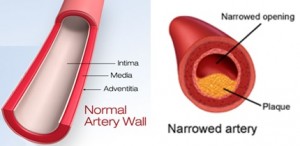 What jumps to your mind when hearing “stroke”?
What jumps to your mind when hearing “stroke”?
Whether you say – it’s a primary cause of death and long-term disability worldwide, or FAST (i.e., the acronym of stroke signs: Face dropping, Arm numbness/weakness, Speech difficulty—Time to call 911), high-five to you!
Have you ever thought of stroke as older people’s disease? If so, you need to know beyond that.
I’m going to provide you with the most recent and significant evidence on changing trends of stroke, based on American Heart Association’s statistics on heart disease and stroke 2022 update and wealth of research publications.
I’ve read some touching stories of stroke survivors from American Heart Association News. A common thread emerging in these stories: The survivors are young, age 20-40s, carrying out a typical routine on an ordinary workday, then stroke hit each of them, followed by a long, courageous journey of rehabilitation and recovery.
So, what’s happening here?
First, let me give you a snapshot of the big picture:
- Each year, about 795,000 people experience a new or recurrent stroke.
- Of all stroke types, – 87% are ischemic stroke (a blockage of the brain artery caused by a blood clot), and – 13% intracerebral hemorrhage (a bleed into the brain caused by burst of a weak vessel or ruptured aneurysm), including 3-5% subarachnoid hemorrhage.
- Approximately 10% of all strokes occur in adults under 50 years of age.
- On average, every 3.5 minutes, someone died of a stroke.
Although stroke rates declined slowly over decades in old adults, a concerning trend is that stroke incidence increased in young adults, and noticeably, young women (18-45 years) had a higher risk and incidence of ischemic stroke than men of the same age. Specifically, women at ages 35 or younger are 44% more likely to suffer from ischemic strokes than their male peers, but no gender difference in young adults age 35 to 45 years. Furthermore, women do worse after stroke.
But about 80% of strokes are preventable, and the key is to control risk factors.
What is sex difference in stroke? Why do women do worse?
Beside those modifiable and non-modifiable risk factors that increase the risk of ischemic stroke regardless of gender (I’ll address later), women have unique risk factors such as:
- Pregnancy: Pregnant women have a 3 times higher risk than young, non-pregnant ones. Hypertension related disorders in pregnancy (e.g., preeclampsia, eclampsia) are known as a stroke risk factor, and the risk of stroke can be 5.2 times higher in these women.
- Oral contraceptives (Birth control pills): The overall risk is low, but the risk increases in women with other risk factors (e.g., smoking, obesity, and higher cholesterols).
- Migraine: It’s more common in women than in men, the risk increases with its frequency, and with additional risk factors (e.g., oral contraceptives, smoking, etc.)
- Atrial fibrillation: Despite its high prevalence in men, atrial fibrillation triggered stroke risk increases in post-menopausal women.
- Menopause: Higher risk and mortality of stroke occurred in women reaching menopause at age younger than 45 years.
- Hormone replacement therapy (HRT): Current users of oral HRT had a higher risk of ischemic stroke than non-users, irrespective of low or high dose(s).
Other documented factors include preterm delivery, social or economic determinants, etc.
Women often fare worse in stroke, because age plays a large role as a nonmodifiable risk factor. Women tend to be older at the time of stroke, experience more severe stroke than men; they are also in poorer health prior to stroke, and more likely live alone and develop depression afterward. Strikingly, young women have a worse functional outcome too.
In addition, initial signs or symptoms of stroke in women may differ from those traditionally recognized ones, leading to certain misdiagnosis and delayed treatment in the clinical setting.
Strategies to control risk factors and prevent (or reduce) stroke – Stay tuned.
For now, remember: no one is too young for stroke, no time is set for stroke. In other words, stroke can hit anybody at any age and at any time!
So, recognize F.A.S.T.
Image credit: heart.org and vitalscan.com
